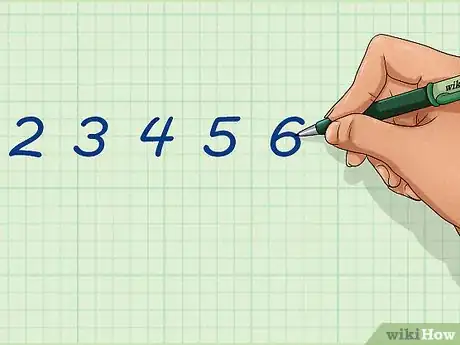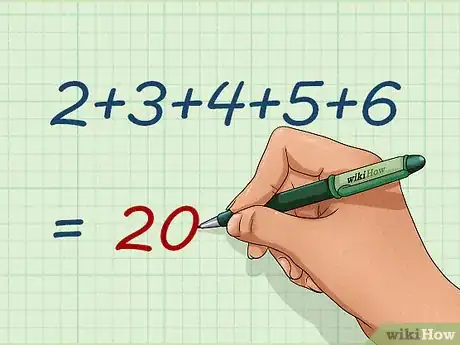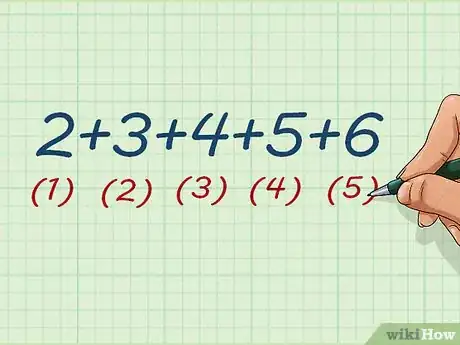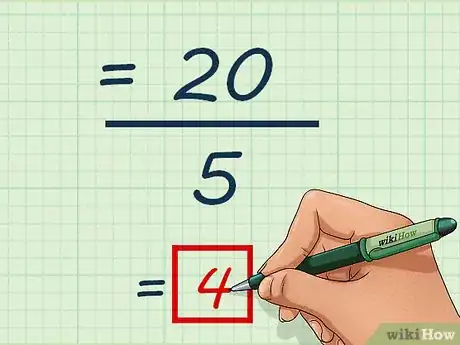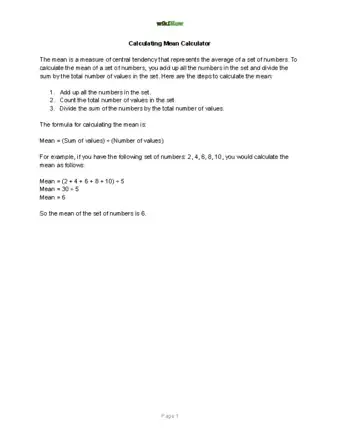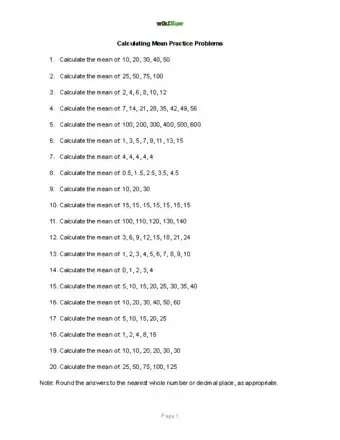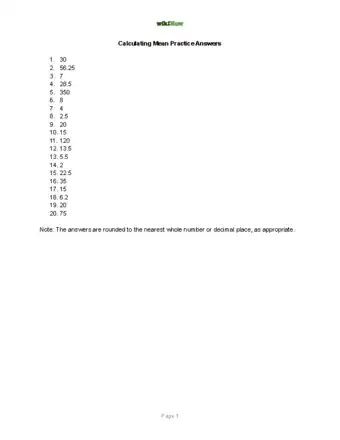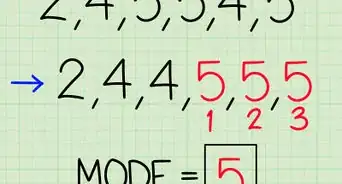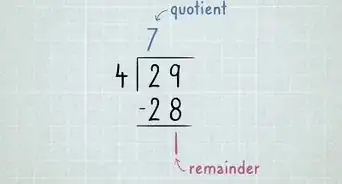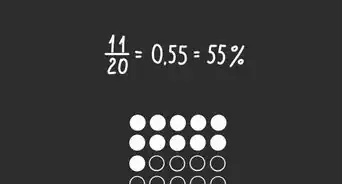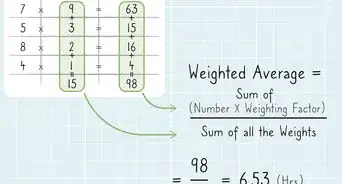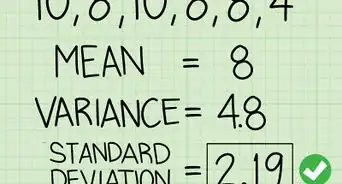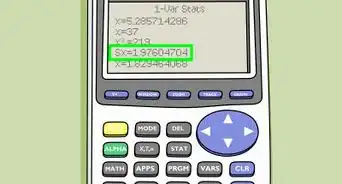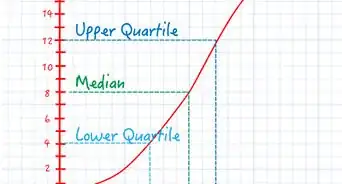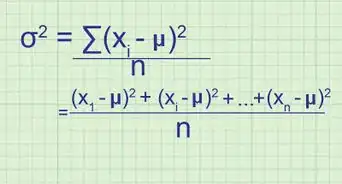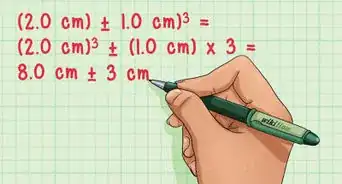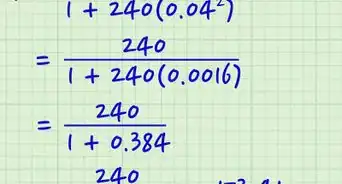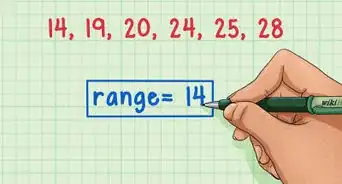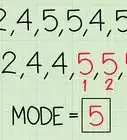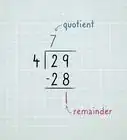wikiHow is a “wiki,” similar to Wikipedia, which means that many of our articles are co-written by multiple authors. To create this article, 40 people, some anonymous, worked to edit and improve it over time.
There are 8 references cited in this article, which can be found at the bottom of the page.
This article has been viewed 351,854 times.
Learn more...
In mathematics, the "mean" is a kind of average found by dividing the sum of a set of numbers by the count of numbers in the set.[1] While it isn't the only kind of average, the mean is the one most people think of when speaking about an average. You can use means for all kinds of useful purposes in your daily life, from calculating the time it takes you to get home from work, to working out how much money you spend in an average week.[2]
Steps
-
1Determine the set of values you want to average. These numbers can be big or small, and there can be as many of them as you want.[3] Just make sure you are using real numbers and not variables.
- Example: 2, 3, 4, 5, 6.
-
2Add your values together to find the sum. You can use a calculator, by hand, or a spreadsheet application to do so.[4]
- Example:
Advertisement -
3Count the number of values in your group. Count all of the numbers added up. Identical values should still be counted, meaning if you have values that repeat in your set, each one still counts in determining your total. Do not include the sum (answer) of all the numbers added up when counting the quantity of the values.[5]
- Example: 2, 3, 4, 5, and 6 make for a total of five values.
-
4Divide the sum of the set by the number of values. The result is the mean (a type of average) of your set. This implies that if each number in your set was the mean, they would add up to the same total.[6]
- Example: . Therefore, 4 is the mean of the numbers. You can check your calculations by multiplying the mean by the number of values in the set. In this case, multiply (the mean) by the (the number of values in the set) and your result will be ().
Calculator, Practice Problems, and Answers
Community Q&A
-
QuestionWhat do I do if my mean/average has a remainder?
 DonaganTop AnswererConvert the remainder to a decimal or fraction. For example: the average of 5, 12, and 17 is 34 ÷ 3, which is 11 with a remainder of 1. Convert the remainder to the fraction 1/3 or the decimal .33. Thus, the average is 11-1/3 or 11.33.
DonaganTop AnswererConvert the remainder to a decimal or fraction. For example: the average of 5, 12, and 17 is 34 ÷ 3, which is 11 with a remainder of 1. Convert the remainder to the fraction 1/3 or the decimal .33. Thus, the average is 11-1/3 or 11.33. -
QuestionHow do I calculate the mode?
 Community AnswerIt is the number in a set which appears most often. In the set {1 7 9 0 4 5 4}, 4 is the mode.
Community AnswerIt is the number in a set which appears most often. In the set {1 7 9 0 4 5 4}, 4 is the mode. -
QuestionHow do I find the range?
 DonaganTop AnswererThe range of a data set is the difference between the largest number and the smallest number in the set.
DonaganTop AnswererThe range of a data set is the difference between the largest number and the smallest number in the set.
References
- ↑ https://www.mathsisfun.com/definitions/mean.html
- ↑ http://www.mathsisfun.com/mean.html
- ↑ https://www.mathsisfun.com/sets/number-types.html
- ↑ https://www.mathsisfun.com/numbers/addition.html
- ↑ https://www.mathsisfun.com/data/frequency-grouped-mean-median-mode.html
- ↑ https://www.purplemath.com/modules/meanmode.htm
- ↑ https://www.bbc.com/bitesize/articles/z99jpbk
- ↑ https://www.khanacademy.org/math/ap-statistics/summarizing-quantitative-data-ap/measuring-center-quantitative/v/mean-median-and-mode
About This Article
To calculate the mean of a set of numbers, start by adding up all of the values together to find the sum. Then, count all of the numbers that you added up. Finally, divide the sum of the set by the number of values to get the mean. If you want to learn what to do if the mean has a remainder, keep reading the article!
